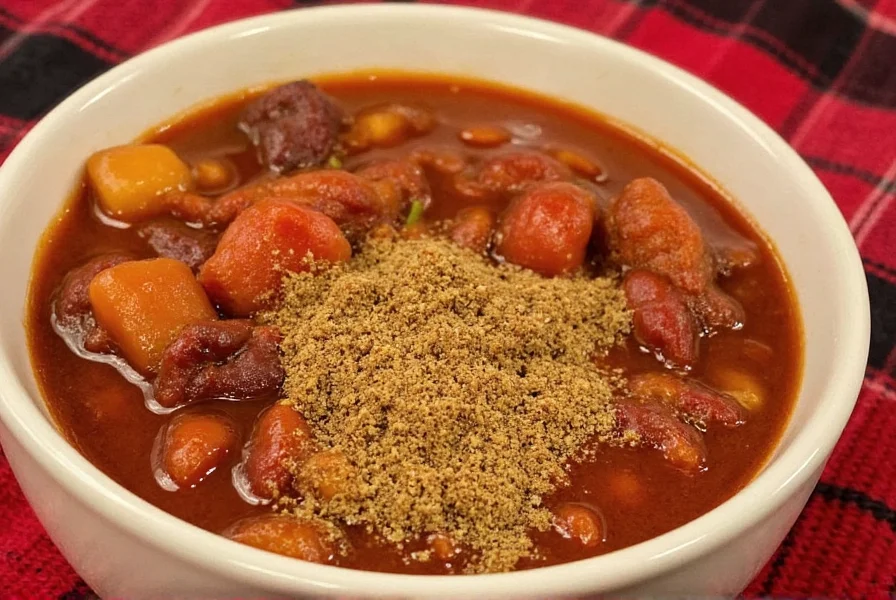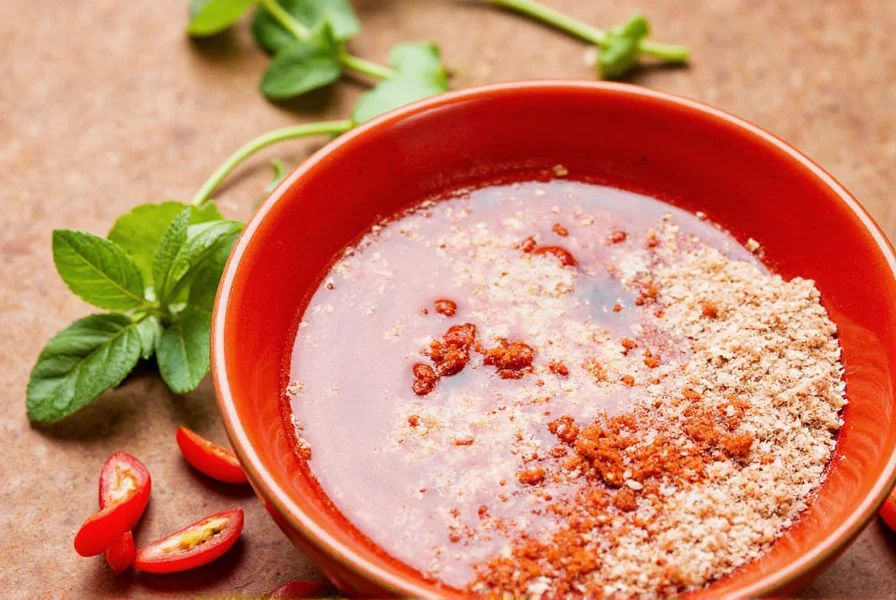Does Cumin Belong in Chili? The Direct Answer
Yes, cumin is commonly used in most chili recipes, though it's not mandatory. Traditional Texas-style chili often omits cumin, while Mexican-inspired chili recipes typically include it as a key ingredient. Most modern chili recipes do contain cumin because it adds depth, warmth, and complexity to the dish. Ultimately, whether to use cumin depends on your personal taste preferences and the style of chili you're making.
In this article, we'll explore the role of cumin in chili, why some people swear by it, and when it might not be the best choice. We'll also give you practical tips and a detailed buying guide to help you make an informed decision.

Cumin Basics: What Is It and Why Use It?
Cumin (Cuminum cyminum) is a popular spice known for its warm, earthy, and slightly nutty flavor. It's used in cuisines around the world, from Indian curries to Mexican salsas and Middle Eastern stews. But what makes it so special, and how does it fit into a bowl of chili?
Cumin adds depth and complexity to dishes. Its smoky undertones can enhance the richness of meat, while its subtle bitterness balances out the sweetness of tomatoes and beans. In chili, it often plays the role of a backbone spice—supporting other flavors without overpowering them.

Chili Variety: Different Types, Different Flavors
Chili isn't just one dish—it's a category of meals with many variations. From Texas-style beef chili to vegetarian lentil chili, each version has its own signature ingredients and flavor profile. So, does cumin work in all of them?
To understand this better, let's break down a few common types:
- Texas Chili: Typically made with ground beef, beans, and a mix of spices like chili powder, garlic, and onion. Cumin can complement the smokiness here.
- Mexican Chili: Often includes cumin as a staple ingredient. Think of chile con carne, where cumin is a key component.
- Vegan Chili: Uses plant-based proteins like black beans, sweet potatoes, and lentils. Cumin helps bring out the natural flavors of these ingredients.
- Vegetarian Chili: Similar to vegan but may include cheese or other dairy. Cumin can add a nice contrast to the creamy textures.

Practical Tips: When and How to Use Cumin in Chili
When to Add Cumin
- Early in the Cooking Process: Toasting cumin seeds before grinding them enhances their flavor. If using ground cumin, add it early in the cooking process to allow the flavor to infuse into the dish.
- With Aromatics: Cumin pairs well with onions, garlic, and peppers. Consider adding it after sautéing those base ingredients to release its aroma.
- As a Finisher: For a more intense flavor, sprinkle ground cumin at the end of cooking. This is great for adding a final punch of warmth.
How Much to Use
The amount of cumin you use depends on the recipe and your personal taste. As a general rule:
- For 4 servings: Start with 1 teaspoon of ground cumin.
- For a bolder flavor: Increase to 1.5–2 teaspoons.
- If unsure: Taste as you go and adjust accordingly.

Buying Guide: Choosing the Right Cumin for Your Chili
| Product | Features | Advantages | Use Cases | Target Audience | Suitable Occasions |
|---|---|---|---|---|---|
| Whole Cumin Seeds | Unprocessed, requires grinding | More aromatic and fresh | Perfect for homemade chili recipes | Cooking enthusiasts, home chefs | Weekend dinners, family gatherings |
| Ground Cumin | Ready-to-use, convenient | Easy to incorporate into recipes | Great for quick meals or busy days | Busy professionals, casual cooks | Lunch breaks, weeknight dinners |
| Roasted Cumin | Smoked and toasted for extra depth | Enhances the flavor profile | Best for rich, hearty chili recipes | Foodies, spice lovers | Special occasions, holiday meals |
When purchasing cumin, look for high-quality products that are free from additives and preservatives. Store it in an airtight container away from light and moisture to preserve its potency.
Frequently Asked Questions About Cumin in Chili
Do you put cumin in chili?
Yes, cumin is commonly used in most chili recipes, though it's not mandatory. Traditional Texas-style chili often omits cumin, while Mexican-inspired chili recipes typically include it as a key component. Most modern chili recipes do contain cumin because it adds depth, warmth, and complexity to the dish. Ultimately, whether to use cumin depends on your personal taste preferences and the style of chili you're making.
How much cumin should I put in chili?
For a standard batch of chili serving 4-6 people, start with 1-1.5 teaspoons of ground cumin. If you're using whole cumin seeds that you've toasted and ground yourself, you might need slightly less as they're more potent. Always taste as you cook and adjust according to your preference - some people enjoy a more pronounced cumin flavor (up to 2 teaspoons), while others prefer just a subtle hint. Remember that cumin's flavor intensifies as the chili simmers, so it's better to start with less and add more if needed.
When should I add cumin to my chili?
The timing of when you add cumin affects its flavor profile. For the most integrated, mellow flavor, add ground cumin early in the cooking process, after sautéing your onions and garlic but before adding liquids. If using whole cumin seeds, toast them first in a dry pan until fragrant, then grind and add. For a brighter, more pronounced cumin flavor, you can stir in a small amount (about 1/4 teaspoon) during the last 15 minutes of cooking. Some chefs even recommend adding a tiny pinch just before serving for an aromatic finish.
What happens if I don't put cumin in chili?
If you omit cumin from your chili, you'll still have a flavorful dish, but it will lack the distinctive earthy, warm depth that cumin provides. The chili might taste more one-dimensional or "lighter." Some traditional Texas chili recipes intentionally exclude cumin to highlight the pure beef flavor. Without cumin, your chili will have a different character - it may be brighter and more focused on the tomato and meat flavors. If you're avoiding cumin for dietary or preference reasons, you can compensate with other spices like smoked paprika, coriander, or even a touch of cocoa powder to maintain complexity.
Is cumin authentic in chili recipes?
The authenticity of cumin in chili depends on which regional tradition you're following. Traditional Texas chili (chili con carne) often doesn't include cumin, focusing instead on dried chilies, garlic, and beef. However, many Mexican and Southwestern U.S. chili recipes do include cumin as a standard ingredient. The modern "chili powder" blend that most home cooks use typically contains cumin along with other spices. So, while cumin isn't universal in all authentic chili traditions, it's absolutely authentic in many regional variations and has become a standard ingredient in most contemporary chili recipes.
Can I substitute cumin in chili if I don't have it or don't like it?
Yes, you can substitute cumin, though the flavor profile will change. Good alternatives include: coriander (which has some similar earthy notes but is more citrusy), caraway seeds (use sparingly as they're stronger), smoked paprika (for depth without the earthiness), or a combination of oregano and a pinch of cocoa powder. Some people use a small amount of curry powder (about 1/2 teaspoon) to mimic cumin's complexity. If you're avoiding cumin due to taste preference rather than availability, you might simply omit it and boost other spices like chili powder, garlic, and oregano to maintain flavor complexity.
Conclusion: The Final Word on Cumin in Chili
So, do you put cumin in chili? The answer is yes—but it depends on your preferences, the type of chili you're making, and the flavor profile you want to achieve.
Cumin brings warmth, depth, and a unique character to chili that many find essential. However, if you're making a lighter, more tomato-forward chili, you might choose to skip it or use it sparingly.
Ultimately, the best approach is to experiment. Try adding a pinch of cumin to your next pot of chili and see how it transforms the dish. Whether you're a fan of traditional recipes or love to innovate, cumin can be a valuable ally in your kitchen.
Remember, there's no right or wrong way to cook—just delicious possibilities waiting to be explored. And who knows? You might just discover a new favorite flavor combination along the way.











 浙公网安备
33010002000092号
浙公网安备
33010002000092号 浙B2-20120091-4
浙B2-20120091-4